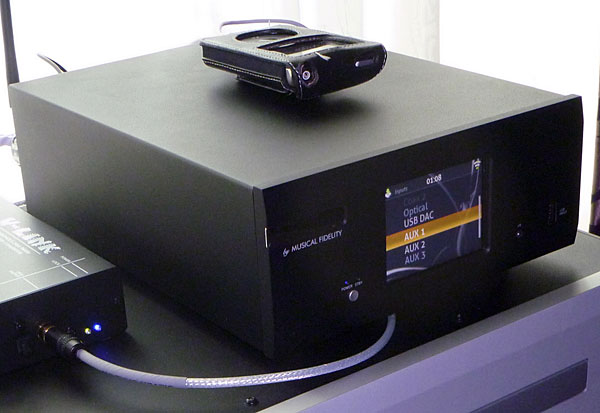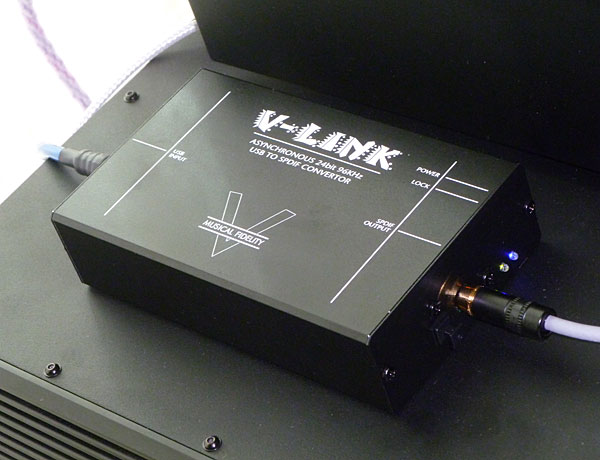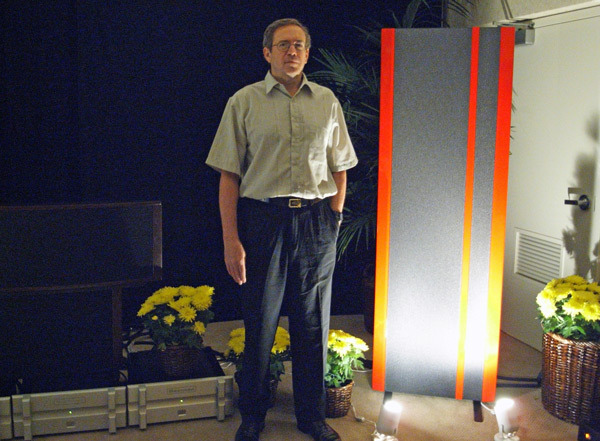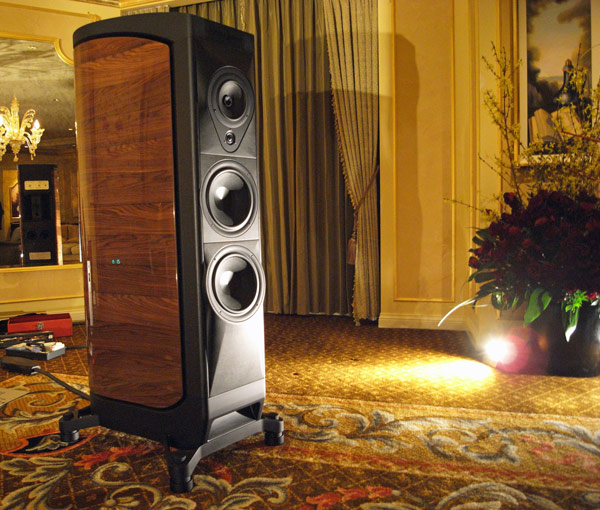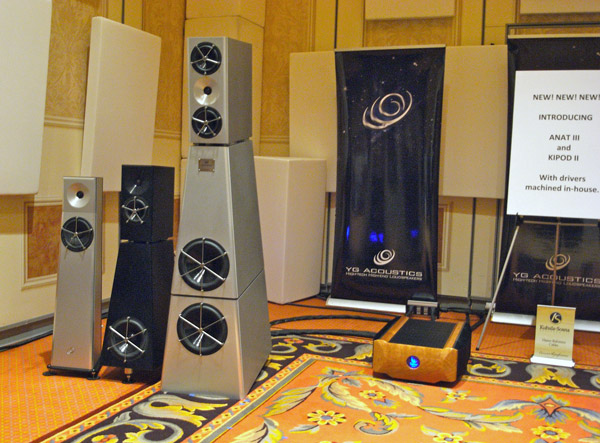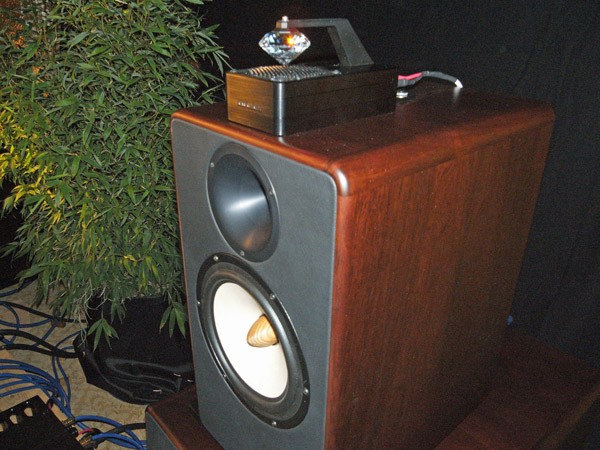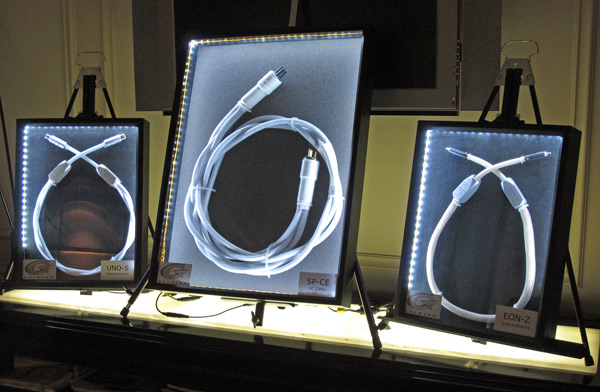
Herbert Wong and Alex Yeung manufacture Gutwire cables near Toronto, Canada, where they live. All Gutwire cables, which are distributed by May Audio, are made of triple-braided copper, and all terminations are crimped without solder.
“We find copper is more natural and musical-sounding,” Herbert explained.
The photo shows the newest additions to Gutwire’s cable line. The power cable is the SP Crystal Edition AC cable ($1800/6ft), which lies in the middle of their price spread. Also shown are the EON-Z interconnect ($1600/1m pair) and UNO-S interconnect ($2500/1m pair). By way of comparison, the prices of the company’s top-of-the-line are as follows: the SP-18.1 AC cable ($7500/6ft), Uno-S interconnects ($2500/1m pair), and digital SD-3-SE ($1150/1m).
The terminations on Gutwire’s novel top-of-the-line SP cabling contain Bincho-Tan (white charcoal). Bincho-Tan emits negative ions, absorbs RF and EMI. Herbert first discovered the substance in his water purifier. Intrigued, he began to research it on the net, and learned about its other properties.
Gutwire also manufactures two 4 and 6 outlet power conditioners, the 4 Bar and 6 Bar ($1100$2600, depending upon the model). Each contains a passive filter, and the top of each is milled from a block of solid aluminum.
In a brief demo, I was struck by Gutwire’s ability to transmit a lovely smooth midrange on the classic recording of Harry Belafonte at Carnegie Hall.


